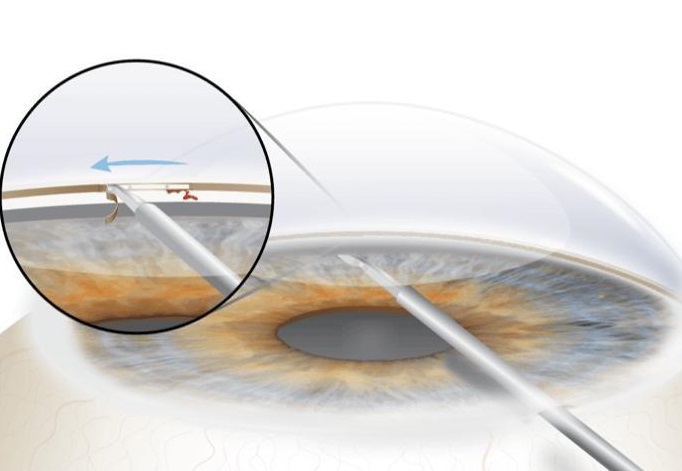
Goniotomy: A Surgery to Lower Eye Pressure
When eye drops or laser are unable to adequately lower eye pressure, goniotomy can be considered. Goniotomy may allow for eye pressure control with or without the use of glaucoma medications. For patients who qualify for the procedure, goniotomy provides an alternative to bleb-forming glaucoma surgeries (trabeculectomy, Xen) or tube shunts.
How does goniotomy work?
Goniotomy cuts the first layer of the natural drain system (trabecular meshwork). This allows the fluid to leave the eye more easily, and lowers the eye pressure.
What are the steps of surgery?
The surgery is performed in the operating room under anesthesia. The eye is cleaned and numbing medication is applied. An instrument then opens the eyelids. Tiny incisions are made in the front of the eye, and a special lens is placed on the eye to visualize the eye’s natural drain. A portion of the wall blocking the drain is removed. An open channel is created, allowing fluid to leave the eye. The goniotomy procedure takes about 20 minutes, but will take longer if performed along with cataract surgery.
What will I feel during and after the surgery?
You may see bright lights during the surgery, but should not feel any pain. You will be discharged with a clear plastic shield over the operated eye. An adult will need to drive you home since you received sedative medications.
What happens to the eye after surgery?
Fluid leaves the eye through the open channel that is created in the eye’s natural drain. This lowers the eye pressure, and one or more glaucoma medications may be stopped after surgery.
How often will I be seen after surgery?
You will see your doctor the first day after surgery, about a week later, and a few weeks after that. Depending on how your eye heals, additional or fewer visits may be needed.
What eye drops will I use after surgery?
Most patients will be asked to use a steroid and antibiotic eye drop. The frequency of the taking the steroid eye drops depend on the amount of the eye inflammation.
Can I stop my glaucoma drops after surgery?
Your doctor will tell you which drops to continue using and how often at each visit depending on how your eye is doing. Sometimes patients are able to reduce the number of eyedrops they are taking. Even if you are taking the same glaucoma medications after the procedure, the surgery is a success if your pressure is lower. The need for eye drops long-term after this treatment varies greatly and depends on your type of glaucoma and the rate at which it is progressing.
Will goniotomy cure my glaucoma?
The simple answer is no. Glaucoma is a chronic disease that requires constant monitoring and treatment. The goniotomy procedure will help to lower your eye pressure. However, it will not reverse any loss of vision that has already occurred.
What happens if goniotomy does not work?
Whether or not medications or an additional procedure will be needed after GATT depends on what is considered a “safe” pressure for your eye, how much your eye scars, the type of glaucoma you have, and more. After surgery, we will continue to monitor you closely so we can adjust therapy if needed.










